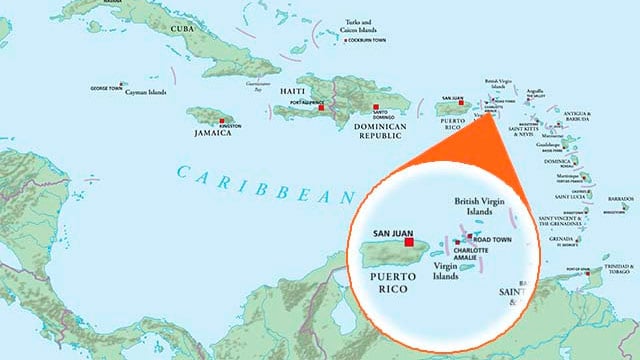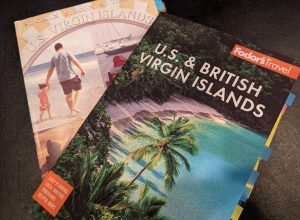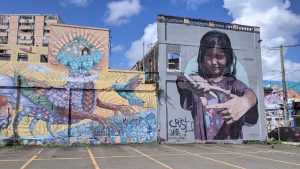Sabbatical project- the short version
My 2022-2023 sabbatical will consist of two large and two small projects. First, I will submit for publication my translation of Fru Muus’ klage [No Compromise: The Marital Drama That Shook Norwegian-America]. The story, written by Bodil Stenseth, uses the marital drama of St. Olaf College’s founder to characterize the broader Norwegian-American community in Minnesota. The scandal is weaved into the contemporaneous debates on women’s legal rights, the role of religion, citizenship, and identity.
My second large project is to research Norwegian involvement in the transatlantic slave trade and the Dano-Norwegian colonies in what is now known as the US Virgin Islands. Residing in Charlotte Amalie during the entire academic year will provide a base for exploring St. Thomas, St. Croix and St. John.
Two smaller projects that I will complete are an update to the Sett i gang textbooks and to develop new exercises on the Godt i gang portal.
Sabbatical project- long version (with lots of links)
1. Complete the translation of Fru Muus’ klage and submit for publication
In 2019, Forlaget Press published a book titled Fru Muus’ klage: En historie og kjærlighet, tro, svik og utvandring [No Compromise: The Marital Drama That Shook Norwegian-America], written by Bodil Stenseth. I was immediately drawn into the story because of how the author uses the marital drama of St. Olaf College’s founder to characterize the broader Norwegian-American immigrant community in Minnesota. The scandal triggered a very public debate on women’s legal rights, divorce, the role of religion, citizenship, and identity. Stenseth creatively connects so many pieces of local and Norwegian-American history; pieces that I have never felt were openly discussed or widely known, even as they so closely connect to the college.
This project is no small feat. I have begun the work, but much remains. The body is 304 pages in length; additionally there are 38 pages of citations, notes, etc. My plan is that the book will be translated and available for sale in time for the 2024 sesquicentennial of St. Olaf College. And because I have easier access to some of the archives than the original author, I will also be adding some visuals and locating some of the original source materials.
A significant element of my teaching and scholarship involves the use of new technologies. Previously, this has been focused on the use of technology for acquiring language (projects such as Sett i gang and Godt i gang). While still rooted in technology, this project shifts that focus to the use of technology for the purpose of translation, a field that is rapidly changing.
During summer 2020, I was awarded the Magnus the Good Collaborative Fellowship together with three students. We built a termbase to translate a small portion of the book and also a corresponding article so we could test its value. The article was published in Norwegian-American Studies (v. 39). In short, once one spends time developing this type of tool, it makes the translation project much more efficient and consistent. I will be working with 1-2 student editors summer 2022 on the bibliography, footnotes, maps, pictures, etc. I hope to be at least half way through my a working draft by the end of July. From there I will be getting feedback from several individuals.
If you are interested, I’ve written more about this project in this post.
2. Explore and Research the former Dano-Norwegian colonies

Map from: https://www.vinow.com/general_usvi/geography/
I have developed a specific interest in the involvement of Norwegians in the transatlantic slave trade and the establishment of the Dano-Norwegian colonies (The former Danish West Indies) in what is now the US Virgin Islands.
Together with my husband and son, I will reside on St. Thomas for the 2022-2023 academic year. From there, I can easily travel to the other islands where Danish influence remains. I also intend to visit the British Virgin Islands and if possible, St. Bart’s as well (a former Swedish colony).
We will travel around July 1, so as to arrive in time for the commemoration of the Virgin Islands Emancipation (slavery was abolished on July 3, 1848).
Background: Denmark-Norway is responsible for the shipment and enslavement of 85,000+ Africans from 1660-1806. Yet, research focuses largely on Denmark. This is because Norway was under Danish and then Swedish rule during this time period (1671-1917). Yet, Norwegians were actively involved in the transatlantic slave trade. Many of Norway’s wealthy and influential willingly took part, including Peter Jansen Wessel Tordenskjold, Adrian Benjamin Bentzon, and Jørgen Thormøhlen.
But, many others were sent there an alternative to serving a life sentence in prison or at a work house. In exchange for taking part in the colonization efforts, they provided a needed trade (such as sailing expertise). One such example of this is Jacob Andersen Dischingthun, whose life story is especially riveting. He was first enslaved in northern Africa (enslaved Norwegians in Northern Africa is another very interesting topic), then imprisoned in Norway, then eventually rose to the position of governor and slave owner in St. Croix.
There are also Norwegians who spoke loudly against slavery, but these too are difficult to pinpoint. One good example of this is Jørgen W. Cappelen, the founder of Norway’s largest publishing house. Cappelen used his position in theological and missionary circles and his love of writing to advocate for the abolishment of slavery. Yet, when you look at his biography in the Norwegian encyclopedia (snl.no) or on the publishing house website (cappelendamm.no), there is no mention of this whatsoever. It’s as if Norway’s involvement has been so purposely disregarded, that not even those fighting for rights of the enslaved have been publicly acknowledged.
The Danes and Norwegians were responsible for a very small portion of the transatlantic slave trade. Despite being smaller in scale, they were known for being far more brutal in their treatment of enslaved workers. In fact, on a recent trip to Puerto Rico, I had the opportunity to visit the settlement of Santurce, just to the east of San Juan. It was formed as a community of freedom seekers who escaped their enslavers from nearby islands. Here they formed their own maroon community. A number of these individuals were from St. Croix seeking refuge in Puerto Rico. Some were granted freedom; all were treated significantly more humanely than their Dano-Norwegian counterparts -and certainly no one has ever heard of Spaniards humane treatment of enslaved workers!
I will first spend significant time educating myself. I have a long list of articles and books to read, but I also want to physically explore the islands.
A short introduction to the Danish West Indies by Erik Gøbel, senior researcher and archivist at Rigsarkivet [the National Archives i Denmark].
This topic is one that interests me greatly, but doesn’t yet have a specific outcome, yet. The majority of what I’m finding is piecemeal; some is in English, but I will be reading quite a bit in Danish and Norwegian as well. I will begin with surveying what is available and creating a podcast with interviews of experts, authors, and locals. And, if I find the right project, I’d consider doing another translation… but after Fru Muus is complete.
My two small projects for the year include further development of the Godt i gang web portal and a small update to Sett i gang. More on those later.
Sabbatical project- final thoughts
It won’t be a surprise for any academic to hear that I am really looking forward to sabbatical! The past couple years have been incredibly challenging in higher education, while also overseeing two departments and a program. My sabbatical also marks a notable shift in my scholarly work; my small projects continue the work that I began before my tenure and promotion, but my two large projects push me in new exciting directions.
Thankfully, my husband has been approved for a leave of absence from his position at JJ Hill Montessori and has accepted a position to teach 1st-3rd grade at the Virgin Islands Montessori School & Peter Gruber International Academy. Our plan is that our soon-to-be 5 year old will attend there as well (they also have a pre-school). We will live somewhere on the island of St. Thomas, hopefully on the east side near the school.
position to teach 1st-3rd grade at the Virgin Islands Montessori School & Peter Gruber International Academy. Our plan is that our soon-to-be 5 year old will attend there as well (they also have a pre-school). We will live somewhere on the island of St. Thomas, hopefully on the east side near the school.
Right now we trying to figure out the first steps of moving. We will need to rent out our house, sell our cars, ship some essentials, then buy a new car, learn to drive on the left, find a place to live in an extremely tight rental market, make new friends, and so on. But we are all super excited… 92 days, but who is counting?!
Update 4/23:
*Note an earlier version of this post had this working title: [my working title: Let Patience Be Your Liniment: The Marriage Scandal That Shook Norwegian-America].
